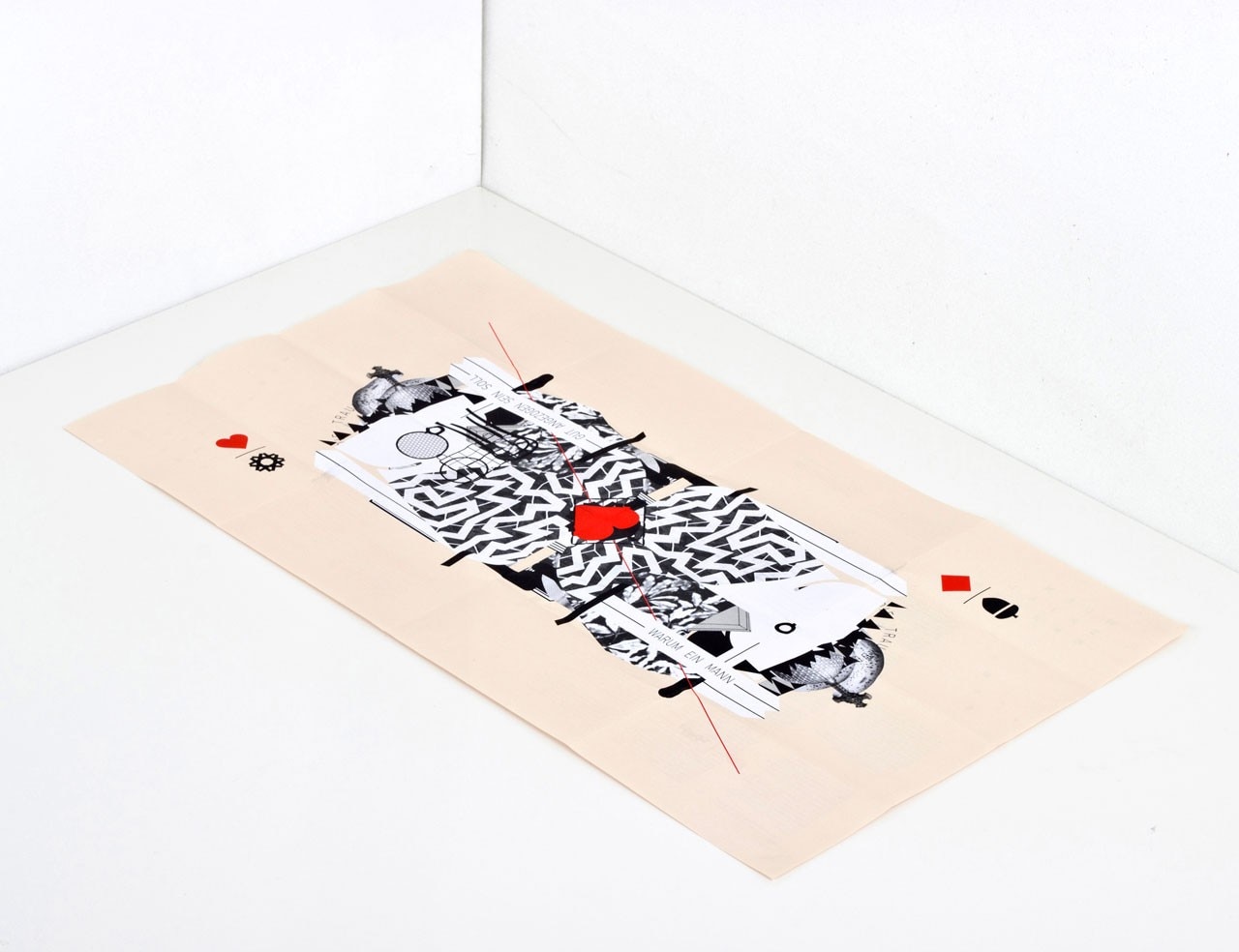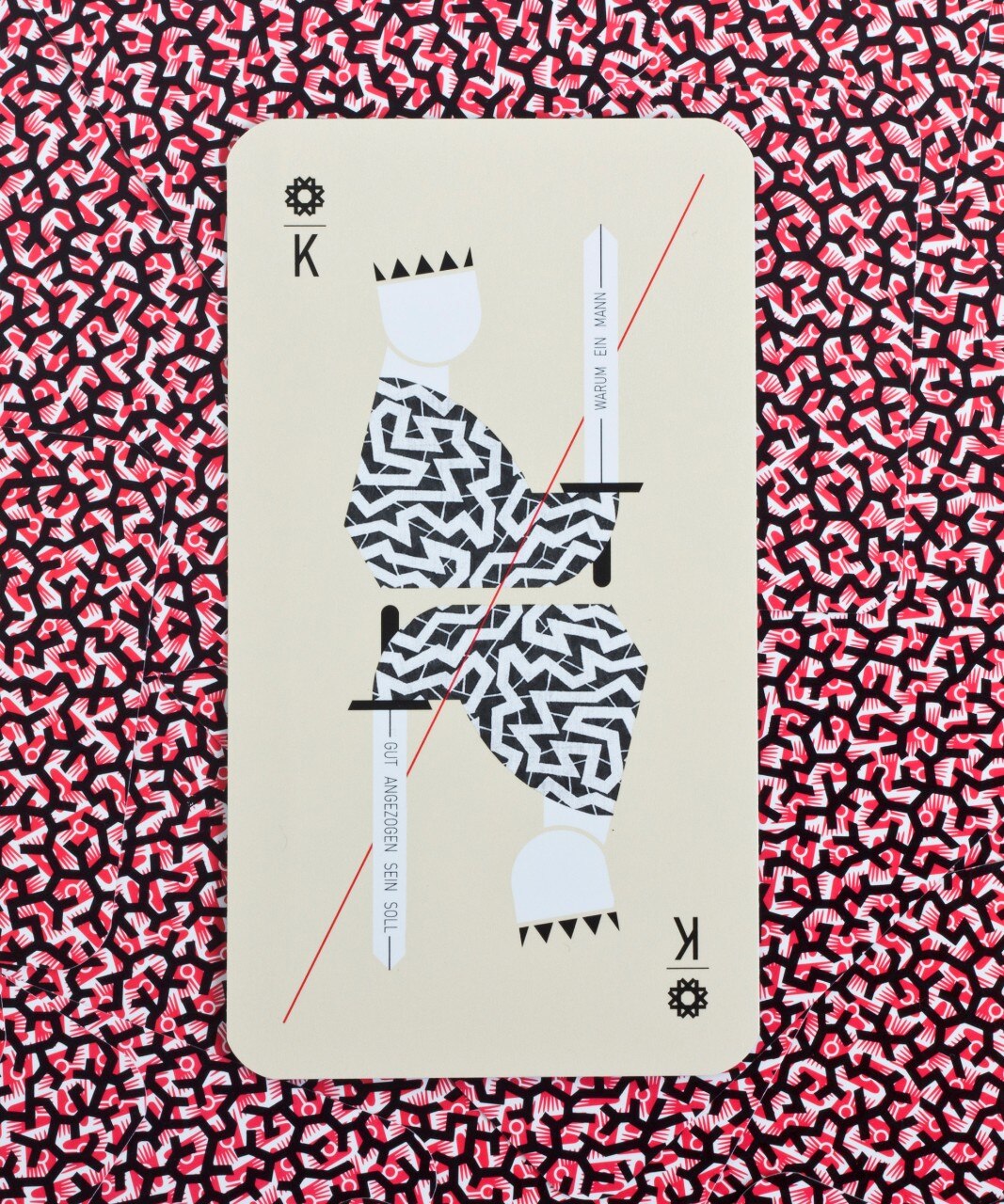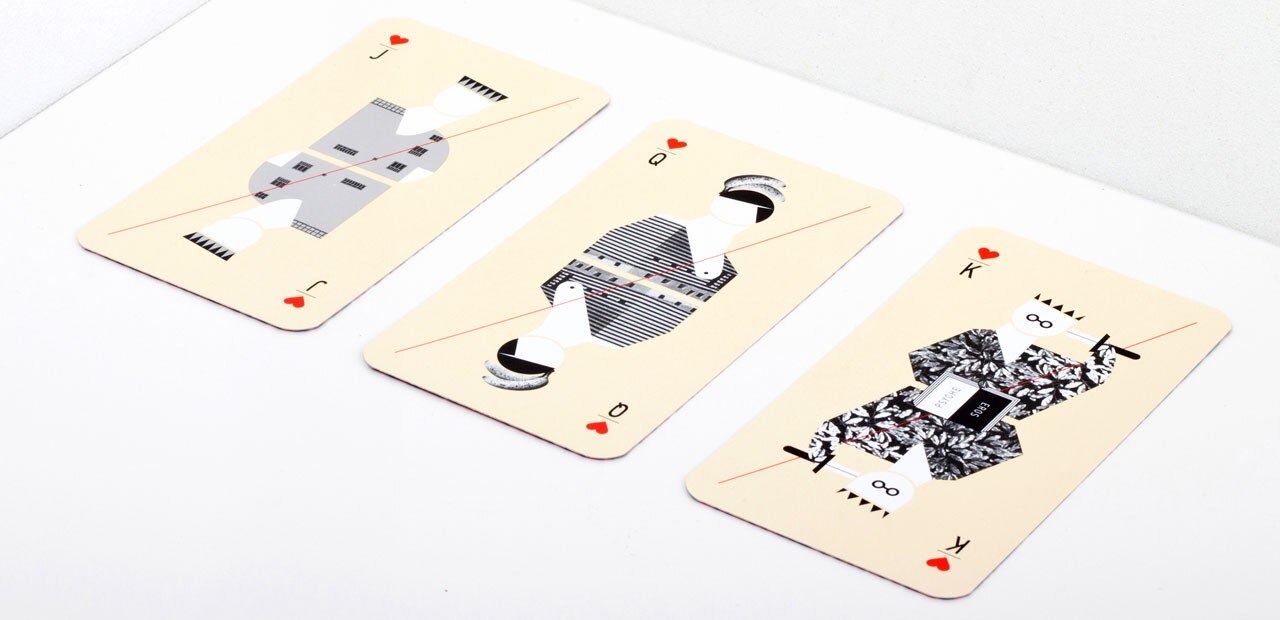In 2012 six product designers from six different European nations have been invited By the Vienna Tourist Board (Vienna Tourismus) to capture their view of Vienna in a three-dimensional proposal for a souvenir for the city.
This challenging task has been taken up by a group of acclaimed, up-andcoming designers: Germany’s Ding 3000, Switzerland’s Big Game, France’s Ionna Vautrin, Italy’s/The Netherlands Studio Formafantasma, Spain’s Hector Serrano and the United Kingdom’s PearsonLloyd. The result of the competition have seen as winner Studio Formafantasma which designed a deck of cards loaded with historical references to modernist Vienna. The design of the cards revisits the picturesque.


The spade symbol has been replaced with the Eicheln (acorn), one of the suits used in Germany and Austria, especially in the southern regions. These suits explicitly refer to rural culture and seasonal harvesting. As a reinterpretation of such characteristics the six is designed with five acorns stacked at the bottom of the card as if the fruit had fallen from a tree. The king of hearts is armed with elegance. His sword is carved with the title of the essay by Adolf Loos ‘Why a man should be well-dressed’ while the texture of his vest samples a textile designed by Josef Hoffmann for the Austrian company Wiener Werkstätte. The queen of hearts is the French American-born dancer Josephine Baker. She is wearing the house designed for her in 1927 by Adolf Loos, but never built.
The armour of the Jack of Hearts is a side view of the Steiner House, designed in 1910 by Adolf Loos and located in St. Veit-Gasse 10, Vienna. The two jokers are pictured as waiters of a Viennese Kaffeehaus. One wears the iconic hat of the famous coffee brand Julius Meinl. On the tray coffee is served traditionally, with a spoon laid upside down on the cup. The other joker carries the ‘candy dish’, one of the most iconic pieces of the J. & L. Lobmeyr Viennese glass manufacturer, designed by Oswald Haerdtl in 1925.




